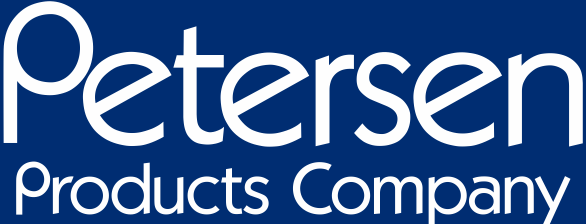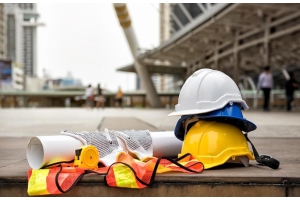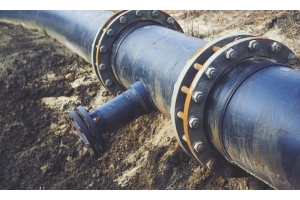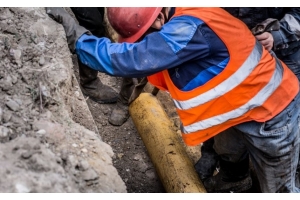High Pressure Inflatable Line Stop

Oil refineries are difficult, high stress environments and it is not at all uncommon for critical maintenance to take place while plant operations continue… even in areas immediately adjacent to repair work. The stakes are high: after all, shutdowns are expensive and can affect supply lines in other plants and industries… so plant operators will go to great lengths to keep units running, even while repairs take place.
TEAM Industrial Services, Inc. (TEAM) specializes in this type of work, and wasn't surprised when they were called in to take a look at a corroded, leaking Water, Caustic and Catalyst line in a refinery in Baton Rouge, Louisiana. This was a 1.5” line coming off a 16” header. TEAM was able to enclose and seal the leak at that time. But after a time, corrosion down the line from the enclosure caused complete joint failure. This is not unusual, and TEAM has a ’typical’ procedure for such situations; “In many cases, we’re able to do a conventional line stop with a mechanical seal,” says Scott Lominac, a TEAM hot tapping services coordinator. “And with the line stop in place, we can then do repair work as needed. But there were special challenges in this case.”
One part of the ‘special challenges’ included very tight working conditions around the corroded line, which prevented use of the bulky equipment needed for a conventional line stop. So if TEAM was going to repair the line while avoiding a unit shutdown, they had to shut off the line with some other technique. TEAM often uses inflatable line stops aka bags in these situations, which are inserted into the line via hot tap, and filled with high-pressure water. It’s a technique that TEAM uses, “… about 50 times a year.” But the challenge this project presented wasn’t limited to cramped working conditions… this was also an extremely high-pressure line. “The rule of thumb is that inflatable bags need to be inflated to twice the line pressure to achieve a good plug,” Lominac explains. “So a 130 psi line—the highest pressure we’d worked with before this project—would require a bag that could handle inflation at 260 psi. On the refinery project, we were working on a 150 psi line, meaning that we needed a bag that could handle 300 psi inflation pressures. That was new territory for us.”
It may have been new territory for a bag stop—Lominac believes this might have been the first use of an inflatable bag in a plant environment for a line stop at such high pressure. Given the unusual nature of the project, he established two priorities; test the bag and insertion procedure thoroughly before live insertion and inflation… and, purchase two custom-designed bags (one for backup) from the best source he knew, Wisconsin-based Petersen Products.
A Century in Business
Petersen Products first patent was issued in 1916 to George Petersen, and the company has stayed focused on specialty equipment for the pipeline and wastewater industries ever since. And, it remains a family business—current CEO, Phil Lundman, is George Petersen’s grandson.
The company’s best known specialty is inflatable plugs used in a variety of applications, often customized for specific chemical, temperature, and pressure requirements—customized bags from Petersen Products have been used all over the world in mines, dams, plants, and sewer lines. In this case, TEAM needed two bags that would seal off a 16” line while withstanding caustic conditions and very high pressures (for a bag stop—TEAM has performed line stops using their "high stop®" method at pressures as high as 2,600 psi). Petersen designed and built the bags in less than a month, using ballistic nylon made impermeable and corrosion-resistant with ethylene propylene diene monomer (EDPM—a type of synthetic rubber). They did this work in less than a month, shipping the completed product to TEAM in February 2013.
Petersen tests all custom bags prior to shipping by inflating the bags to 1.5 times the projected use pressure, for 24 hours. But TEAM needed even more assurance, given the specialized nature of the refinery project, and the consequences—unit shutdown—of a failure.
Customized Testing
To perform rigorous testing in conditions that closely simulated actual plant conditions, TEAM built a ‘test vessel’ that modeled the 16” header on their premises, and used pumps to raise internal pressures to 150 psi. In addition to bag integrity, they also wanted to measure and analyze forces on the bag’s ‘launch tube’.
“The launch tube is what we bolt onto the bag for actual insertion and inflation,” Lominac explains. “It pushes the bag in a measured distance, we inflate with liquid and/or gas, and it stays in place for the entire repair. And then it’s used to withdraw the bag. We design that part of the assembly, not Petersen, so that was a main concern in our testing—we needed to know that that all of the components would maintain integrity throughout the process.”
Accordingly, load gauges were installed on the launch tube binders, and consulted during testing. During testing, the bags and launch tube held up well, and pressures on the tube were actually a bit less than anticipated design pressures. TEAM was ready to move ahead with project.
Always an Unknown
“Anytime you’re putting a mechanical stop in a live system, there are unknowns,” Lominac says. “We can use ultrasonic testing to check pipe thickness, but we can’t tell if there’s scaling or channeling on the inner surfaces.”
Fortunately, inflatable bags work quite well with rough pipe surfaces—they’re flexible, and adapt well to irregularities. But there was a problem with TEAM’s first attempt at bag inflation. Using an air-operated piston pump, the bag was first inflated with water to 270 psi, then the plan called for a nitrous system to raise the psi to 300, and maintain that pressure. But during the first attempt, pressure gauges at the nitrous bottle read 300 psi, while gauges at the line tap and on the bag read just 220 and 275 psi, respectively. This was a clear indication that either the launch tube assembly or the bag itself was leaking.
When the bag was withdrawn, a small tear was found—this was probably caused by some roughness or sharp edge in the pipe interior. “It can be very hard to avoid that—we can’t really use video at this pressure,” Lominac says. “99% of the time it’s not a problem, but it does happen. Fortunately, we had a backup in this case.”
TEAM cleaned the tap hole, and then inserted the backup bag. This time, the bag reached design pressures and achieved a 100% seal that held during repair work. Line repairs were completed without substantially affecting refinery operations.
TEAM drew several lessons from this project:
- Testing is critical in high-pressure bag stops.
- Inflatable bags can be used in high-pressure line stops.
- Close attention to gauge placement is very important—in this case, load gauges were able to verify the launch tube design and bag integrity, and prevented use of a damaged bag.
The project was a solid success from TEAM and the customer's viewpoint, and Lominac expects to keep using bags at high pressures. “We’ll certainly work at 150 psi again,” he says. “And we’ll be establishing new ranges—we expect to use inflatable plugs at even higher pressures.”
# # #
Angus W. Stocking, L.S. is a licensed land surveyor who has been writing about infrastructure since 2002.






